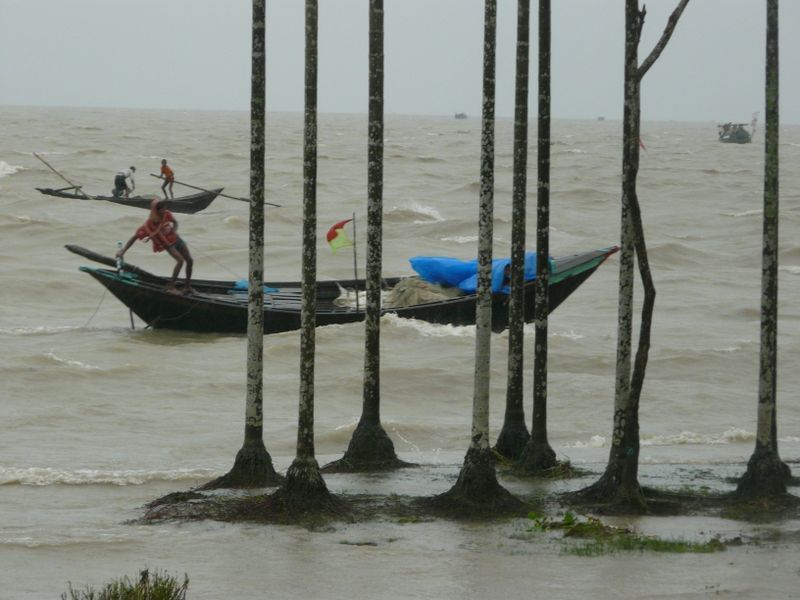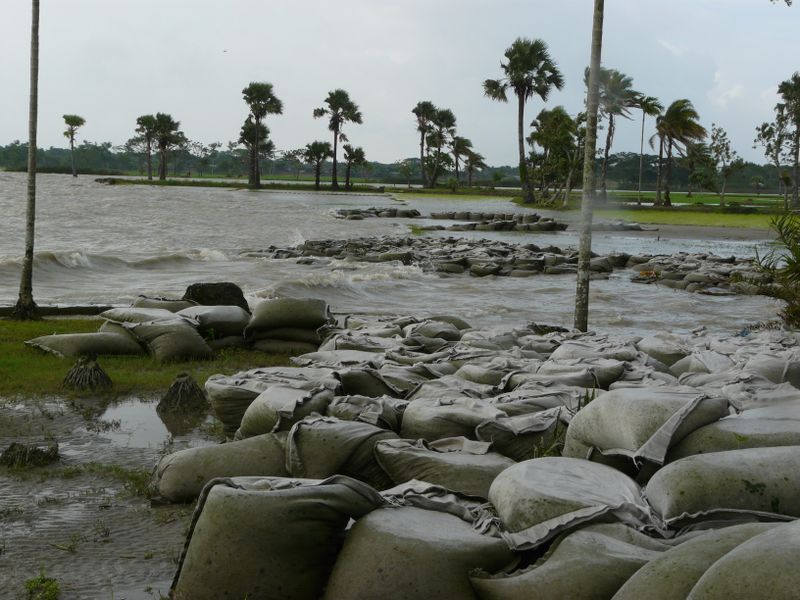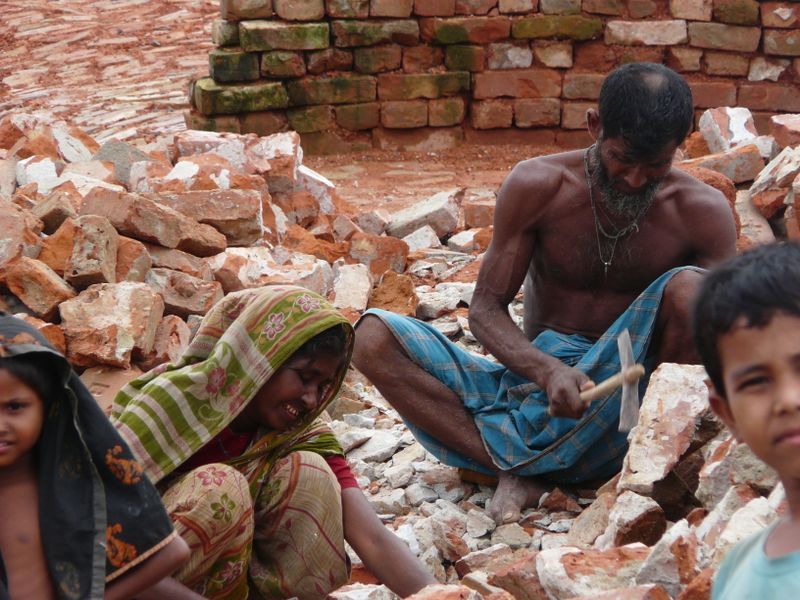It is monsoon season in Bangladesh, making the delicate balance between water and land more tenuous than ever. It was raining heavily when we disembarked from the ferry on Bhola Island and it continued to rain for much of the day. South of Dhaka some 205 km. (or 11 hours by ferry), Bhola is caught between the rising saltwater of the Bay of Bengal to the south and the ominous churning of the Meghna River to the east.
As Himalayan glacier melt increases, sending unprecedented volumes of water downstream, the river has grown and spread wider as silt buildup makes it more shallow, eating away at the shoreline. While there is also evidence of significant accretion of land as silt creates new islands, this new land is not agriculturally viable for several years, so it does not help the recently landless. In addition, it may disappear as suddenly as it appeared.
We drove over narrow and severely potholed roads to the eastern side of the island near Lalmohan and hiked through mud to where the waves of the river lapped angrily at the shoreline, breaking off chunks of dirt as we watched. The river is so wide here it more closely resembles a brown sea, and you can't see the opposite side, miles away. As with most of Bangladesh, the area is heavily populated. We met many people who had moved their houses back from the shore 2, 3, 4, or more times as the shoreline crept westward, taking their cropland with it.
We learned from COAST, a local NGO working on environmental and human rights issues, that disappearing land has led to a growing number of disputes over what land remains, which has triggered a spate of disfiguring acid attacks amongst the villagers.
One man, whose house is now about 50 meters from the shore, stood on the concrete blocks lining the front of his property and pointed out in the water to show where his fields used to be -- approximately 1 km. out, he claimed. His strip of land was unusual in that the government had installed blocks and sandbags to forestall the river's encroachment, but the blocks did not extend very far down the shore, and most areas don't have them. But now the river crests the blocks during high tide, and he and his family of four aren't sure what to do next.
Not far away, we talked to villagers who had been forced back by the river and now built their corrugated metal huts on top of the government-built dike a few hundred meters from the shore. The landless often place their homes on government land -- such as dikes and roadsides -- in the hope they can squat there for the time being. (We even saw a cluster of huts on a rural helipad.) But the waters are now climbing the modest wall of the dike, and many of these people will soon be forced to move again.
In Dhaka, we visited two slums where most of the residents came from Bhola due to river erosion. One couple we interviewed had arrived just 8 days earlier, and were working as "brick breakers," squatting all day and hammering at defective bricks to chip them into brick gravel. As the brick dust and chunks flew, their three young children played nearby.









